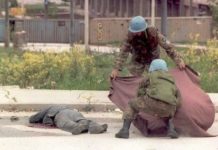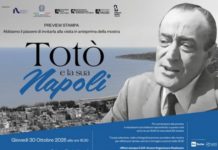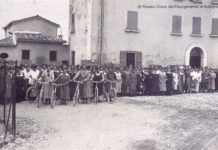Lo sguardo di un’iraniana, Antonia Shoraka, di lingua madre italiana, insegnante all’Università di Lingue di Tehran (un’Altritaliana…), sul 66esimo Festival di Venezia (sett. 2009) pubblicato qualche giorno fa nel periodico semestrale : Film International, l’unica rivista cinematografica iraniana in lingua inglese. Il servizio con le foto, in formato pdf, si puo’ scaricare in fine articolo.
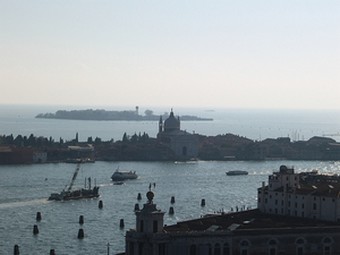
Venice Film Festival is a luxury and flamboyant event just like the city itself which has apparently turned into Italy’s museum and one may easily forget that in cold months when tourists are not willing to be there, flooding of the streets makes life quite difficult for inhabitants. The festival is not kind to strangers; the guests are barely welcome just for the few days in which their films are screened, let alone the journalists. The only advantage considered for journalists is a card which they can buy for 50 euros and watch any film they want. Otherwise, they should pay 8-28 euros to watch every film at the big hall or 40 euros for 19:30 show time and that excludes the Red Carpet ceremony. After paying 50 euros, I could watch 15 films and could step on the Red Carpet just for once! Another advantage is that instead of having to pay 28 euros to buy the festival’s catalogue, they can avail themselves of five euros in discount and take part in press conferences and closing ceremony. Now let’s focus on films.
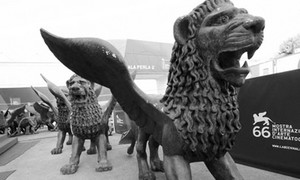
South of the Border, the 20th film of Oliver Stone, is a political reportage. Stone goes to Venezuela in January 2009 to talk to its president, Hugo Chavez, and analyze the image that has been depicted of him by the American media. Is Hugo Chavez as “anti-American” as mass media try to show? The journey takes Stone and his production crew to other countries and the screenplay turns into a travelogue of seven Latin American states with Stone conducting unofficial conversations with their presidents: Venezuela’s Hugo Chavez, Bolivia’s Evo Morales, Brazil’s Lula da Silva, Argentina’s Nestor Kirchner, Paraguay’s Fernando Lugo, Ecuador’s Rafael Correa, and Raul Castro, the brother of Fidel Castro. The main motive for traveling to this region which has been traditionally considered as the United States backyard before becoming problematic under President George Bush was “Iraq experience.” Stone says, “Americans must question the role of our media in demonizing foreign leaders as our enemies. The consequences of this can be brutal.”
What differentiates Stone’s film from a similar movie made by his critical countryman, Michael Moore, is his positive and analytical approach to people and conditions. If Moore resorts to anything to make political disclosures and impress the audience and uses the radical methods employed by the American statesmen to attack them, Stone analyzes the subject. He depicts Bush, who is saying in a televised interview that he is not ready to spend a lot of money to erase an iron-fist dictator like Chavez. That picture is immediately followed by another which shows Chavez on the television screen who firmly says, “Mr. Bush, you are a fool.” Stone has also cast Chavez talking about his plans to make Venezuela self-sufficient in wheat production and accompanies him on a visit to wheat production centers. At the same time, Chavez says, “We are building Iran’s atomic bomb here….” And when he reads bewilderment on the face of the person in charge of the center, he adds, “Of course, one made of wheat!”

The first film of Nader Takmil Homayoun, the Iranian filmmaker living in France, is called Tehroun. It is a street movie which presents a realistic and bitter image of the sprawling capital city of Iran. The relationship between “have-nots” and their web of problems reminds one of neo-realistic films. A young couple moves to Tehran from Kerman and due to hard conditions, they have to hire a kid to panhandle. In the meantime, the kid is stolen and they owe 10,000 dollars to the gang leader who had leased the kid. The woman is enceinte and wants to help her husband. Apart from Attila Pessiani and Pejman Bazeghi, who are among professional Iranian actors, other actors are amateurs. Apparently, the film has had an eye on the foreign markets in addition to domestic screening. Such scenes as marriage at a notary public office, burying the dead, a public bathhouse, and a night party interrupted by the police can be very attractive to people in western countries. The last sequence reminds the viewer of the closing sequence of Francesco Rosi’s Salvatore Giuliano and other Italian films about mafia: the whole scene is a long shot from above and has been shot at Tehran railroad station. The man and his wife, who is holding the kid in her arms, go to the railroad station to return to their city and another couple, who are their friends, sees them off. After farewell, a passer-by jostles as he goes by the man, but in fact, he has hit him with a knife. The man falls on the ground and the hit man escapes. People gradually gather around him while his friends are restless. Thus, the “godfather” has his revenge on the man who has ignored his unwritten law and has betrayed him to the police. The film was warmly welcomed by viewers in International Critics Week section and won that section’s 5,000-euro special prize.
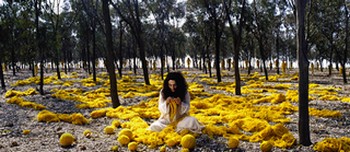
Another Iranian expatriate, Shirin Neshat, a famous still photographer and creator of different video arts who has been living in New York for years, had brought Women without Men to this year’s festival. The film is based on a namesake novel by Shahrnush Parsipur, which was published in Iran some 20 years ago. The book was translated to English by Kamran Talattof in 1998 and was published in the United States. Its Italian version was translated by Anna Vanzan in 2000 and was published in Italy. Both the film and the book follow stories of four women who live in Iran in 1950s and shows, through a surrealistic approach, that all attempts made by those women to achieve independence and freedom lead to deadlock though they belong to various social classes and age groups. Their men only show them an outlook of despair and disillusionment and separation from those men seems only possible through their death. The main difference between the book and the film is that the novel has put more emphasis on feministic aspects of their narratives, but the film highlights political and historical backdrop of the story. Efforts made by the then Iranian prime minister, Mosaddeq, to nationalize oil industry lead to a military coup in 1954 and subsequent repression by Shah, in this film, coincides with the understanding by women that any movement aimed to achieve more awareness and freedom will be doomed from the first under those patrimonial conditions which are a smaller version of the militaristic repression by the Iranian regime. The film has been cast in Morocco and is a co-production by France, Austria, and Germany. However, it is Iranian not only in set design, but also in dialogues. The splendid work of Martin Gschlacht, as director of photography, sympathetic and calculated performance of Iranian actors and dexterity of Shirin Neshat as director, which brought her the second prize of the festival, that is, Silver Lion for the Best Director, are among major fortes of the film. The director’s approach to countenance and physical features of actresses can opened a new chapter in aesthetics in the Iranian cinema. The four women cast in the film are not conventionally “beautiful”, but they have sympathetic and expressive faces which give them a more profound character beyond dazzling beauty of gorgeous movie stars.

The White Space by Francesca Comencini, the 48-year-old daughter of the famous filmmaker Luigi Comencini, was a western-type “Women without Men; a film which was expected to win the best actress prize for powerful performance of Margherita Buy. The prize, however, was given to Ksenia Rappoport, the 35-year-old Russian actress, for her role in the Italian production, The Double Hour, director by Giuseppe Capotondi. Another unexpected selection which elicited protests from the Italian media was allocation of Mastroianni award for the best young actor to the 28-year-old Jasmine Trinca for her role in Michele Placido’s Il grande sogno. Made by a renowned Italian filmmaker, the film follows suit with Bernardo Bertolucci’s Dreamers and focuses on the cultural revolution in Europe in 1968 which had preoccupied young people of that time. It seems that the present generation of filmmakers would not have fulfilled its artistic mission until they made a film about that subject. However, it is so inept in depicting the fate of a bourgeoisie family with revolutionary children and a superficial love triangle which you usually see in soap operas that you feel the final story could have taken place at any other time or place.
The White Space is a modern drama about a middle-aged woman who gives birth to an immature girl who should live three months at an incubator, though physicians do not expect her to live. The three-month waiting makes the women spend a lot of time with her immature child at the hospital and that time is a white space for her which gradually erodes her power to resist despair because there is no reason to be hopeful. Maria finally decides to accept her suffering and tolerate it with motherly stamina. The film also turns into a hard campaign for Comencini who has tried to “create big tension in apparent absence of events.” She has noted that “The film never stops and advances on its own; it runs.” At the end, Maria is rewarded by embracing her healthy child. What prompted me to compare this film to Women without Men was that there are almost no feministic Iranian movies in which the leading character ends up successful. It seems that no Iranian woman is supposed to be successful in the Iranian cinema and it is hard to fathom whether such bleak fate in the Iranian films is reality or representative of dominant tendency of the Iranian women. Perhaps Iranian filmmakers think that a failed and disillusioned woman deserves more to be filmed than a woman whose uses her capacities to help herself and other women to overcome social, economic and psychological problems. Just assume that an Iranian filmmaker decided to make a film similar to The White Space and make her heroine and viewers happy by showing them that a lonely woman “without a man” can save her beloved one. In that case, the director will certainly feel that he has ignored his commitment and mission as an artist and his film is meaningless, idealist, and superficial. Showing a woman who is fighting to improve her conditions and achieve even small results is many times more useful than depicting a woman who is constantly wailing about her ignored rights and does nothing to restore them up to the end of the film. That picture would be even contradictory to realities of modern Iranian women who are becoming increasingly efficient. Perhaps, a patrimonial culture is trying to produce and enhance that image of women in order not to lose ground.
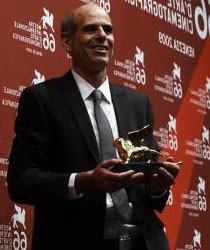
This year’s Golden Lion for Best Film was given through unanimous vote of jury members to Samuel Maoz’ anti-war film, Lebanon. When receiving the award, the 47-year-old Israeli director dedicated it to “thousands of people” who “go to war, come back and lead an apparently ordinary life without ever forgetting what they have done or seen.” “From his viewpoint” there is no truth in war and it is all chaos. He said that he had been there and knows that all soldiers are trained to kill in order to survive. He added that primitive instincts take hold in war and this caused him to feel ashamed. Maoz wrote in the festival’s catalogue: “On June 6, 1982, at 6:15 a.m., I experienced the horrors of war firsthand, for the first time in my life. I reacted in an instinctive act of self defense. I was 20 years old. About 25 years after that miserable morning that opened the Lebanon War, I wrote the script for the film Lebanon. Whenever I had tried before, I could not continue. Better to live in denial than not to live at all. When a person feels he has nothing to lose, he takes chances. In early 2007, I hit rock bottom and decided to go all the way. I felt a weird sense of euphoria. This was not a measured, organized writing process, but rather a kind of trance. I wanted to convey the devastating experience of war in the hearts and souls of the four heroes.”
The 92-minute film has been shot in the narrow and dark space inside a tank where four young Israeli soldiers are trapped and no backup comes to help them. Having lost control of their nerves, they fight each other and are only connected to the outside world through a binocular with broken lens. In the middle of the film, the tank is shot at and is temporarily disabled. The canned food which bursts in the attack smears the walls of the tank and its screens with a sticky mucous-like liquid which drops off the tank up to the end of the film and indicates extreme horror which has made the not-so-brave heroes almost delusional. The film enjoys a powerful and surprising structure and helped by audio effects, is successful in transferring extreme terror of leading characters to viewers. Lebanon is a superb example of an anti-war film in war genre. Ang Lee, who was a member of the jury for Golden Lion, noted that all jury members were unanimous on the peace-seeking tank!”
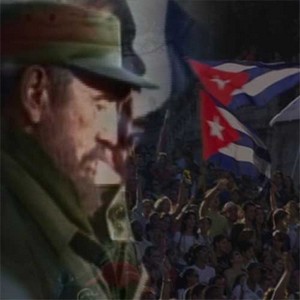
L’oro di Cuba made by the seasoned Italian director Giuliano Montaldo, is a documentary report marking the 50th anniversary of the Cuban revolution. Montaldo started his career in cinema in 1950s as assistant to Gillo Pontecorvo. The peak of his artistic and commercial achievement as director was in 1970s when he made Sacco e Vanzetti (1971) and Giordano Bruno (1974). He is known in Iran with Marco Polo (1980) television series, which was also aired in 75 other countries. In 1990s, he directed a number of the most famous Italian operas including Tosca, Boheme, and Trovatore featuring Luciano Pavarotti and Placido Domingo. However, despite all the effort he makes to represent the past, present and even the future spirit of Cuba in L’oro di Cuba, the film is a tiresome documentary full of interviews with personalities active in various fields. In a scene, the head of a television network in Cuba tries to justify censorship by saying that they do not cut out any scenes of foreign films, but they put indecent scenes through filters and add explanations to them in order to make them more understandable to people!
The Pothole made by 32-year-old Ali Karim, was one of the Iranian films in this year’s festival and can be considered to be cinematic representation of an old Iranian proverb which warns people against making vicious plans for others. Instead of a pothole, there is actually a well in the film which causes trouble for drivers. The film follows suit with general style of closed circle of new wave Iranian films in dealing with a natural disaster like an earthquake. It focuses on a quake-stricken old man (cast by Mostafa Tari, the old and capable Iranian movie and stage actor) who has lost his wife and house. He then chooses a young lonely woman as his new wife and reconstructs a demolished hut along the road to be used as his new abode. He also uses the hut as a mechanical workshop to repair cars which have fallen into potholes he has dug on purpose in order to make a living. His intrigue finally backfires. The tendency to stay away from a crisis while making a film about it may be considered a new tendency in the young generation of Iranian filmmakers and is mostly a smart choice than a conservative one. Karim, being a trainee of Kiarostami’s workshops, has thanked him in closing credits of his film and does not stop there in eulogizing big names of the Iranian cinema. In the film’s brochure, he explains about his acquaintance with Amir Naderi in Pusan Festival and says how encouraging remark of that great filmmaker, which was printed in the brochure of Vegas: Based on a True Story (screened in last year’s Venice Festival) prompted him to make his first feature. After watching Karim’s short film, The Elevator, Naderi wrote, “Your next film should be a feature.”

What Do You Know about Me? is a 79-minute, 16-mm docudrama made by, the 49-year-old Italian director and tells the story of the Italian cinema in the past 30 years during which immigration of big directors, absence of auteurs, drastic fall in cinema productions, and cultural stagnation of recent years, has led to severe decline of the Italian cinema. There is a scene in which the filmmaker asks adolescents who love to attend television programs if they knew Federico Fellini. Out of 15 adolescents, only one says that she has seen his name in her textbook. Another girl also says that Fellini is the name of her previous school. Others, however, have never heard the name. Explaining his reason for making this film, the director says, “What has happened to Italian cinema? Why has that season stopped when our cinema stood out in the world both from an artistic and commercial viewpoint from the post-war period to the ’70s? Differently from other Italian mysteries, there are no corpses here, nor bloodsheds; there have been no investigations, nor trials, not even in the headlines of newspapers. Among the many mysteries of those years this one is one of the most neglected: maybe because in Italy everything which is not written word or information is not considered something really important from the cultural viewpoint.”
The film opens with a shocking scene of the last masterpiece of Pier Paolo Pasolini, Sodome: 120 Days and immediately, Bernardo Bertolucci is seen who asks (apparently of himself) whether a film like Sodome can be made today. The main character is a disillusioned director called Felice Farina who is shown in a film criticizing his indolence and saying that perhaps their main mistake was that they gave up. “Even a pilot needs to fly, at least, 200 hours per year to have his permit extended. Why we thought that we would remain filmmaker forever even if we did not make a film. We should have worked.” Another part of the film is about a struggle between Fellini and Berlusconi in those years when Berlusconi swayed octopus-like control over all Italian private televisions. When Fellini decided to protest to discontinuation of his films, which were replaced by commercials, he chose “let’s not break the story, let’s not disrupt the feeling” as his motto. Berlusconi, however, said about him that although Fellini was a good filmmaker, he was drowned in delusions while television dealt with realities. Jalongo cuts Berlusconi’s remark to an obscene scene from a soap opera to show everybody what the current Italian prime minister means by “reality.” He is a personality held responsible by Italian intelligentsia as the main reason behind drastic cultural decline in Italy during recent years. Interestingly, the Fellini had sensed the danger about two decades ago.

The new film by Giuseppe Tornatore is Baaria which despite 25 million euros invested in it by the gigantic Medusa Company and remarkable hype about the film being a masterpiece in the opening day of the festival, could not attract the attention of jury members. The film, which was on the Italian screens from September 25, failed in the festival and signified failure of a cinema current in Italy which thinks it is capable of competing with the European and even the world cinema through extravagance. The strange name of the film has been taken from birthplace of Tornatore near Palermo in Sicily which is said to have been derived from the Arabic term “Bab-ul-Qarid” which means “wind gate.” The film is a remake of a historical juncture which is loved by the director and tells the story of a Sicilian family through three generations: dreams, aspirations, disillusionments, sorrows and sadness of people whose story we follow from 1930 through 1980s. It took nine months to prepare the film, one year to design the set and six months to shoot the film. It has been shot at 122 locations and casts 210 actors, including 63 professionals.
Peter Greenaway, a famous filmmaker who believes that cinema has died many years ago, had brought his latest work, The Marriage, to this year’s Venice Festival. Absorbed by the potential discourse which can exist between 8,000 years of western painting and 114 years of cinema, he has designed a multimedia installation to honor the cinema. A 40-minute film on that project was screened at the Festival while the original project was put on display on San Giorgio Island, one of the 1,000 islands which are located around Venice. Having similar experiences in the past three years with Rembrandt’s Nightwatch and Da Vinci’s Last Supper, he has challenged Veronese’s Wedding at Cana in this year’s Festival. The project is to continue with other painting masterpieces of the world in their original places of creation in the hope that every one of them would become cornerstone of a new film style, either in ideas or execution. Those projects will include Picasso’s Guernica in Madrid and Michelangelo’s Last Judgment in the Vatican City. In his ambitious project, Greenaway applies avant-garde technologies to original paintings and highlights those elements which have been discovered and elaborated in the best works of cinema. In this way, he finds new meanings and allegories in those eternal treasures of human civilization; he both enlivens them and gives the cinema new reason to live.
Villalobos runs for 110 minutes and is made by Romuald Karmakar, the Iranian – French filmmaker living in Germany. It is a spectacular documentary on a famous disc jockey of electronic music in the world, known as Ricardo Villalobos who uses classic musical pieces including the works of Karajan and Mussorgsky to create shocking pieces of techno music. It not only shocks dark discos and nightclubs, but also provides a picture of restless youth attending discos which can be presented by few psychologists; young people who hide their dignity and self-esteem in music which is reminiscent of western musical civilization. Does Villalobos, like The Marriage, intend to update an art which has been locked up in archives and academies? If an ancient art fails to meet the needs of modern people, it will be forgotten and die. Therefore, perhaps only a new approach using modern techniques can keep it alive. Karmakar explains his work by saying, “He plays incredibly long tracks that catapulted not only thousands of people in the club, but also himself, into another time zone. He lived with passion what we could hear, a kind of tireless call to defend by all means necessary, the reduction of our lives to the mere structure and beat of pop songs. To transform one second into a completely different story, that’s his art that I wanted to track.”
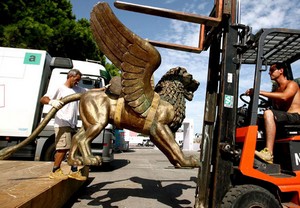
I must admit that Karmakar has been successful in this almost two-hour film, which has been shot at the studio and a disco and is a combination of interviews and music.
The 66th Venice International Film Festival is over. I wonder whether it is really competing with Rome Festival which has been trying in the past two or three years to become a top event in the world cinema. Rome is a better place to receive enthusiasts who do not have to undertake daunting costs of residence in Venice in order to attend the festival. Venice is planning to expand its movie theaters and the new design of a movie theater was displayed this year which is to become the main hall of the festival in the near future. It was a weirdly round hall looking like an ostrich egg which has not been broken by the chick with a cover of brown leather. I hope they would also build a place which would provide better accommodations to domestic and foreign guests.
Antonia Shoraka
Published on the magazine Film International ( Iranian Film Quarterly ) – Autumn 2009, Winter 2010 – Vol. 15, No. 3 & 4.
Scarica il servizio in formato pdf One Thousand and One Islands of Venice, di Antonia Shoraka





